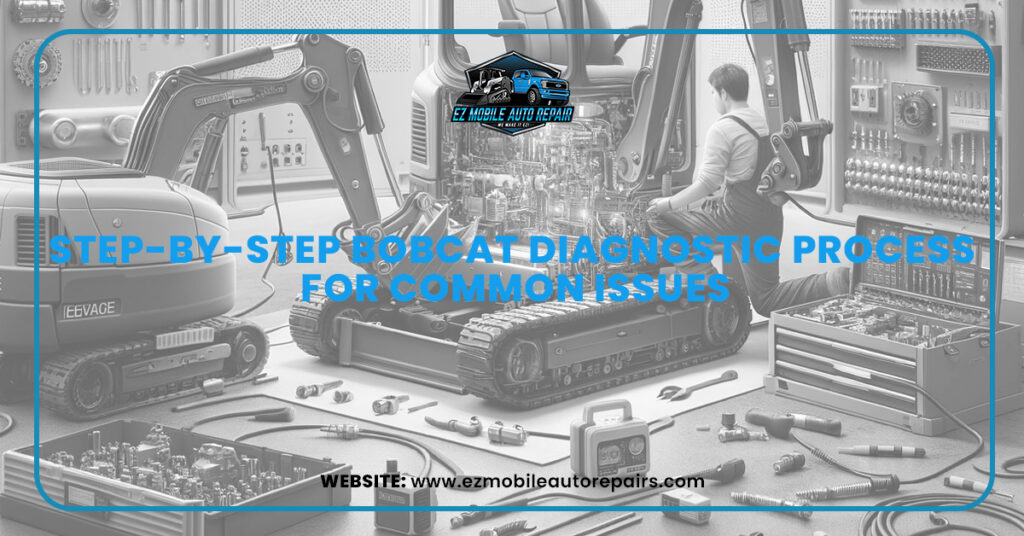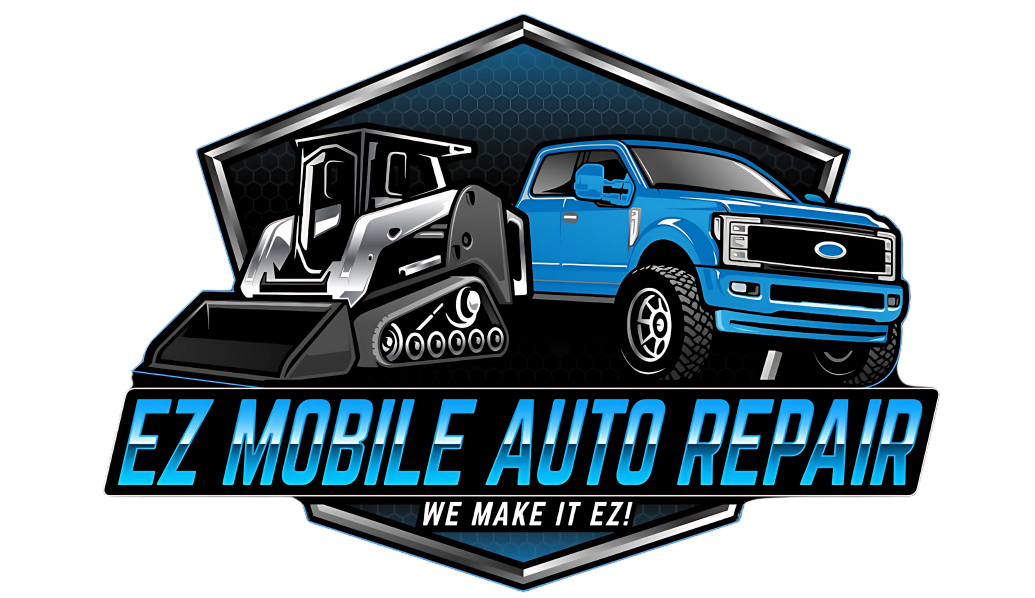
Proper maintenance and timely diagnostics are essential for keeping your Bobcat equipment running at peak performance. Whether you use it for construction, landscaping, or heavy lifting, even small issues can quickly lead to costly breakdowns if they go unnoticed. A structured Bobcat diagnostic process not only identifies the root cause of problems but also prevents future failures, saving both time and money.
In this article, we will walk through the step-by-step process, highlight the tools involved, and provide practical tips to reduce downtime.
Understanding Bobcat Diagnostic Systems
Modern Bobcat machines are equipped with built-in diagnostic systems that provide valuable insights into performance and potential malfunctions. These systems track everything from engine behavior to hydraulic pressure and generate fault codes when something is not working as it should.
The diagnostic system relies on electronic control modules, sensors, and onboard displays to alert the operator. Fault codes are one of the most important indicators, as they help pinpoint where the problem lies. By understanding how these systems work, you can troubleshoot more effectively and reduce the guesswork that comes with equipment repairs.
Step-by-Step Process for Bobcat Diagnostic
Carrying out a Bobcat diagnostic involves more than just looking at error codes. It is a systematic process that combines observation, code reading, and component testing. Let us go through each step in detail.
Step 1: Initial Visual Inspection
The first step is to conduct a thorough visual inspection of the machine. Start by checking fluid levels, including engine oil, coolant, and hydraulic fluid. Low or contaminated fluids are often the cause of poor performance. Look for visible leaks, cracks, or worn-out hoses that may lead to hydraulic or cooling system problems.
Inspect belts, filters, and connectors to ensure there are no signs of excessive wear or damage. A visual inspection helps detect minor issues before they escalate into bigger problems.
Step 2: Reading Bobcat Fault Codes
The diagnostic display on Bobcat equipment provides error codes whenever the system detects a malfunction. These fault codes correspond to specific issues, such as electrical failures, hydraulic problems, or engine malfunctions.
By checking the fault codes, you can determine which part of the system needs attention. For example, a code may indicate low hydraulic pressure, a sensor failure, or a problem with the fuel system. This step is essential for narrowing down the possible causes of the issue.
Step 3: Using Diagnostic Software and Tools
In addition to the onboard display, professional diagnostic tools and software make troubleshooting more accurate. Mobile mechanic tools like handheld scanners or the Bobcat service analyzer allow mechanics to run detailed system checks. These tools provide real-time data, such as pressure readings, sensor outputs, and system calibration results.
Using these diagnostic tools ensures you are not just relying on error codes but also verifying system performance. This step is especially important when diagnosing electrical or hydraulic issues that may not be obvious during a visual inspection.
Step 4: Testing Key Components
Once the fault codes and diagnostic data are reviewed, it is time to test specific components. Electrical checks should start with the battery, wiring harness, and sensors. A weak battery or corroded connections can cause performance issues or generate false error codes.
For the hydraulic system, test for proper pressure and flow. Check valves, pumps, and cylinders to ensure they are functioning correctly. Engine components should also be tested, including the fuel injectors, filters, and air intake system. Identifying weak or failing parts during this stage prevents unexpected breakdowns later on.
Step 5: Identifying Common Issues and Fixes
Through the diagnostic process, you will often encounter recurring issues that many Bobcat operators face. Some of the most common problems include:
- Difficulty starting the machine, often caused by fuel system blockages or weak batteries.
- Hydraulic performance issues, such as slow bucket movement, caused by clogged filters or worn-out pumps.
- Overheating, which may be due to low coolant levels, a damaged radiator, or faulty sensors.
- Electrical errors that can stem from loose wiring or malfunctioning sensors.
Once identified, these issues can be addressed with targeted repairs, part replacements, or simple adjustments.
Preventative Maintenance Tips to Reduce Issues
A successful Bobcat diagnostic process not only identifies current issues but also highlights areas for Bobcat preventative maintenance. Performing regular oil and filter changes, keeping the hydraulic system clean, and inspecting belts and hoses help extend equipment life.
Calibration checks are equally important. Over time, systems can shift slightly out of alignment, leading to inefficiency or stress on components. Routine servicing by following the manufacturer’s guidelines ensures your machine operates reliably.
When to Call a Professional
While many diagnostic steps can be done by an experienced operator, certain situations require professional help. Complex electrical faults, hydraulic pressure testing, and software-based troubleshooting are best handled by certified Bobcat mechanics.
Calling in an automobile professional not only ensures accurate repairs but also prevents the risk of further damage from incorrect adjustments. It is often more cost effective to get expert assistance early rather than dealing with larger failures later.
Conclusion
The Bobcat diagnostic process is a structured approach that combines inspection, fault code reading, diagnostic tools, and component testing. By following these steps, you can quickly identify the root cause of problems and prevent them from escalating. Regular diagnostics and preventative maintenance not only reduce repair costs but also keep your Bobcat equipment reliable for years to come.
Staying proactive with Bobcat diagnostic checks means less downtime, better performance, and longer equipment life. Whether you handle the initial checks yourself or rely on a professional, diagnostics should always be a priority in your equipment care routine.
